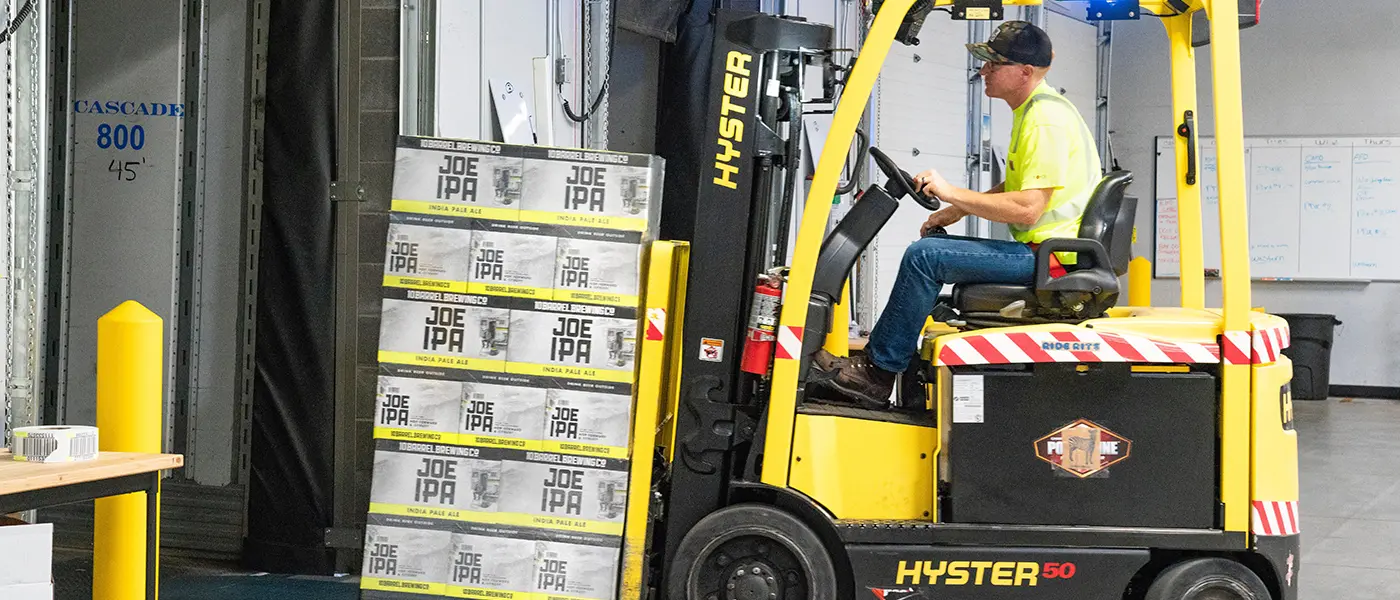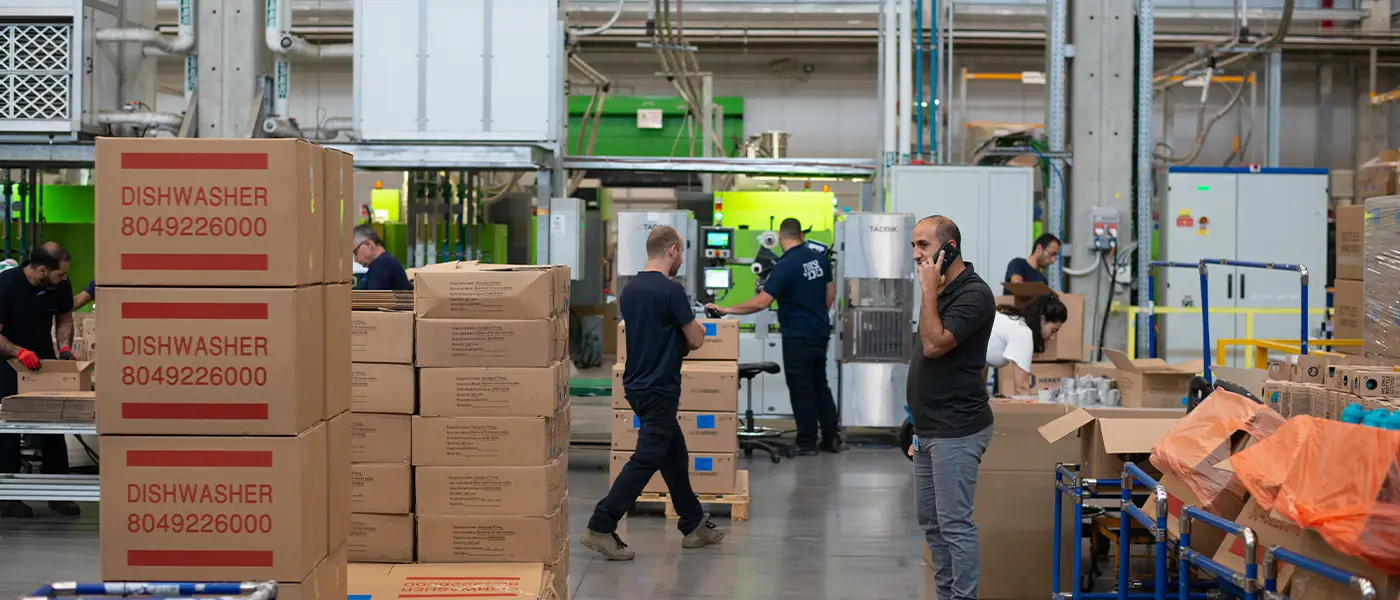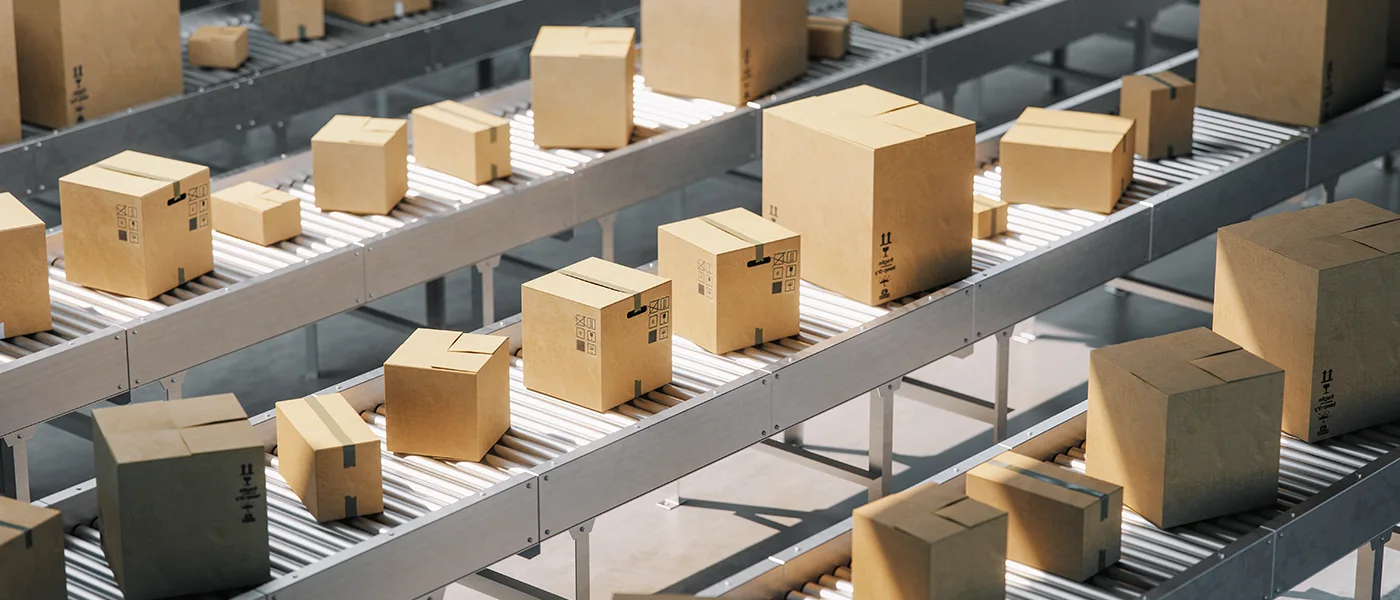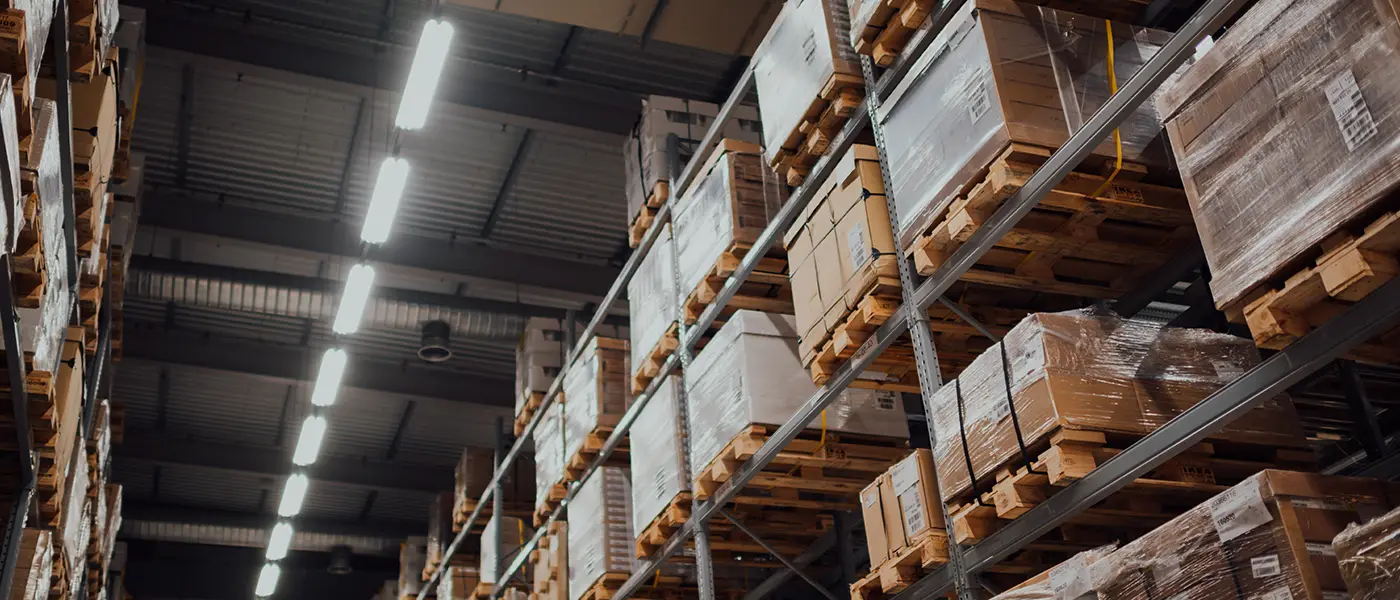Warehouse logistics is an integral part of the e-commerce supply chain. It encompasses the entire spectrum of activities involving storing and moving goods in a warehouse, from receiving inventory to shipping. Organised warehouse logistics impart a significant competitive advantage to e-commerce businesses by saving employees’ time, helping deliver products and services to the market faster, and reducing warehouse operating costs.
Since a warehouse is central to regulating the flow of goods between supply and demand, understanding warehouse logistics is the key to optimising warehouse space.
Dive in to know all about warehouse logistics and how it impacts the entire supply chain.
What is Warehouse Logistics?
The term warehouse logistics is a combination of two terms: warehousing and logistics. While warehousing is the storage of physical inventory for sale or distribution, logistics is part of the supply chain dealing with the planning, implementation, and control of the movement of goods and services between the source and the destination.
In other words, warehouse logistics is the physical flow of goods, from inventory receiving to shipping. Once products are received at the warehouse, they are stored at the put-away bay and transferred to a storage location. On receipt of a sales order, the products are located within the warehouse, packed, and shipped to consumers, completing the physical flow.
In addition, warehouse logistics also includes the data connected to the flow of goods, including product information and fulfillment times. Information flow refers to analysing product demand and determining the time it will take to fulfil a customer’s order. The optimisation and synchronisation of physical and information flow help an e-commerce supply chain operate smoothly.
Warehousing Logistics Objectives
The primary objectives of warehouse logistics in e-commerce are as follows:
![E-commerce Warehouse Logistics: Definition, Examples, Best Practices & Actionable Insights [+Templates] 3 Objectives of Warehouse Logistics in E-commerce](https://golocad.com/wp-content/uploads/2023/07/Objectives-of-Warehouse-Logistics-in-E-commerce-2.webp)
Efficient Inventory Management
Ensure accurate stock levels, optimise storage space, and minimise holding costs by implementing effective inventory management practices.
Order Fulfilment
Streamline the picking, packing, and shipping processes to meet customer demands promptly and accurately, enhancing customer satisfaction and retention.
Optimal Space Utilisation
Maximise warehouse space utilisation through strategic layout planning, efficient racking systems, and smart storage solutions to accommodate a higher volume of goods.
Inventory Accuracy
Implement robust tracking systems and inventory control measures to maintain accurate stock records, reduce errors, and prevent stockouts or overstock situations.
Timely Replenishment
Establish reliable processes for timely replenishment of inventory to avoid stock shortages, minimise backorders, and maintain a smooth flow of goods.
Warehouse Safety
Ensure a safe working environment by implementing proper safety protocols, providing training to warehouse staff, and adhering to regulatory guidelines.
Cost Efficiency
Identify cost-saving opportunities through process optimisation, automation, and technology adoption to reduce operating expenses while maintaining service levels.
Collaboration and Integration
Foster seamless collaboration and integration between warehouse operations, transportation providers, suppliers, and other stakeholders to enhance overall supply chain efficiency.
Continuous Improvement
Encourage a culture of continuous improvement by regularly evaluating warehouse processes, seeking feedback from employees, and implementing enhancements to drive operational excellence.
Key Activities in Warehouse Logistics Operations Process
Warehouse logistics operations consist of several key processes essential for the smooth and efficient management of goods within a warehouse. These processes include:
Receiving Inventory
The first and crucial step is receiving incoming inventory. This process involves verifying the received goods’ accuracy, condition, quantity, and timeliness, ensuring accountability and proper documentation.
Putting Away Products
After receiving, inventory needs to be moved to its designated storage location within the warehouse. Proper handling and organisation during this process optimise space utilisation, facilitate tracking and retrieval, and ensure the safety of both staff and goods.
Storing Inventory
Storing inventory involves placing goods at the optimal warehouse locations. Efficient storage practices maximise space utilisation, simplify inventory tracking and retrieval, and improve labour efficiency.
Picking Orders
The picking process entails selecting and collecting the necessary products from their respective warehouse locations to fulfil customer orders. This step requires accurate order identification, efficient item retrieval, and precise quantity verification.
Packing Orders
Once the items are picked, they are consolidated and prepared for shipment at the packing station. Packaging plays a crucial role in protecting products during transit, reducing damage, and optimising packaging and transportation costs.
Shipping Orders
The final step in warehouse logistics operations is shipping the goods to the customers. This process involves sorting, loading, dispatching, and delivering orders to the right customers promptly and securely. Integration with shipping carriers and tracking systems ensures efficient order fulfillment.
Logistics Management vs. Supply Chain Management
Logistics and Supply Chain Management are two terms that have frequently interchangeable usage in the business world, but they refer…
Warehouse Logistics Example
To illustrate the concepts and strategies discussed, let’s consider an imaginary e-commerce company called SoleStyle, which specialises in selling footwear online. SoleStyle operates a warehouse logistics system to manage its inventory and fulfill customer orders efficiently.
![E-commerce Warehouse Logistics: Definition, Examples, Best Practices & Actionable Insights [+Templates] 4 Warehouse Logistics Example - SoleStyle](https://golocad.com/wp-content/uploads/2023/07/Warehouse-Logistics-Example-SoleStyle-2.webp)
- Receiving Inventory: When shipments of footwear arrive at SoleStyle’s warehouse, the receiving team carefully checks the accuracy, condition, quantity, and timeliness of the products. They use barcode scanners and the warehouse management system (WMS) to ensure proper documentation and accountability. Any discrepancies or damages are promptly reported to the suppliers for resolution.
- Putting Away Products: Once the footwear is received, SoleStyle’s warehouse team efficiently moves the products from the receiving dock to their designated storage locations. They follow a well-organized layout plan and utilise automated conveyor systems and forklifts for quick and precise movement. By properly putting away the products, SoleStyle maximises storage space, enables easy tracking and retrieval, and ensures the safety of both staff and goods.
- Storing Inventory: SoleStyle employs an intelligent storage strategy to optimise its warehouse space. They utilise vertical racking systems that can accommodate a high volume of shoe boxes. The WMS directs the warehouse team to assign each product to its optimal location based on factors such as popularity, size, and brand. This ensures efficient space utilisation, simplifies inventory tracking and improves labour efficiency.
- Picking Orders: When customers place orders on SoleStyle’s website, the picking process is initiated. The WMS generates picking lists that guide the warehouse staff to the exact locations of the requested footwear. They utilise handheld devices or voice-picking technology to ensure accuracy and efficiency. The staff selects the right products, verifies the quantities, and consolidates them for further processing.
- Packing Orders: At the packing station, SoleStyle’s staff carefully inspects each pair of shoes, ensuring they are in perfect condition. They then consolidate the footwear, apply appropriate packaging materials and affix shipping labels. The packaging is designed to provide adequate protection during transit while minimising weight and reducing packaging costs. The WMS generates packing slips and updates the inventory records accordingly.
- Shipping Orders: Once the orders are packed, SoleStyle’s shipping team takes over. They collaborate with shipping carriers to arrange pickups and ensure timely customer delivery. The WMS generates shipping labels and tracking numbers, enabling real-time tracking for both SoleStyle and its customers. Integration with shipping carriers’ systems streamlines the process and ensures accurate order fulfillment.
- Continuous Improvement: SoleStyle continuously evaluates its warehouse logistics operations to drive operational excellence. They regularly analyse performance metrics such as order accuracy, on-time delivery, and inventory turnover. Feedback from warehouse staff and customer reviews is considered to identify improvement areas. SoleStyle invests in employee training to keep them updated on the latest industry practices and technology advancements, fostering a culture of continuous learning and improvement.
By implementing these warehouse logistics practices, SoleStyle can efficiently manage its inventory, streamline order fulfillment, and provide a seamless customer experience. This enables SoleStyle to stand out in the competitive e-commerce market, attracting and retaining customers who appreciate their efficient logistics operations and timely delivery of stylish footwear.
Warehousing Logistics Management: Key Focus Areas
Warehouse logistics management is about receiving and storing inventory, packing goods as per orders, and promptly dispatching shipments every time.
To ensure the effectiveness of each of these operations, it is pertinent that every aspect of the warehouse logistics management is optimised by considering the focusing the key areas of work within a warehouse logistics engine:
Warehouse Layout
The strategy for a warehouse layout design depends on whether you revamp an already functional warehouse or create a new facility from scratch. Besides, the available storage space and the volume of products to be stored also determine the warehouse layout design. Other factors include material flow and stock turnover, warehouse management systems, and workforce dynamics.
Managing Equipment & Storage Systems
The next core area of work in warehouse logistics is materials management, or the processes involved in locating, storing, and moving products. Warehouses have industrial racks for storage. The storage system you choose ideally depends on the target storage capacity, product type, unit load, and costs involved. Apart from storage, materials management involves various handling equipment that significantly affects a warehouse’s layout distribution. Handling equipment can be automated systems run by control software or manually controlled devices such as pallet trucks and traditional forklifts.
Picking & Preparation of Orders
Picking and order preparation is one of the major work areas in warehouse logistics and involves pulling out products from warehouse racks, order sorting, packaging, and dispatch. Various considerations come into play when determining warehouse picking methodologies, including the direction of goods movement, the height of the racks from which the products are extracted, and the picking method used. Selecting the most efficient and effective picking method for a warehouse requires an exhaustive analysis of its activities and the number of orders it processes per day.
Managing Stock & Inventory
Stock and inventory management is concerned with optimising the stock levels in the facility. Modern warehouses leverage software to track inventory levels in real time. A warehouse management system (WMS) integrates with enterprise resource planning (ERP) to organise operations. Apart from real-time inventory tracking and document management, WMS optimises location assignments, picking operations, and more. Data reading and transmission gadgets such as voice picking connect computer systems.
Warehouse Safety
Warehouse safety is one of the most crucial areas of work in warehouse logistics and covers the safety of workers against operational risks, warehouse maintenance, and security systems. Since warehouse logistics involves risky and physically demanding tasks such as manual load handling and prolonged standing hours, a job safety analysis can help workers work safely, comfortably, and with precautions. Likewise, proper maintenance and periodic technical inspections of the facility and devices are vital for safety reasons. It is advisable to frame good equipment operation practices, draw up traffic rules, and install signage throughout the warehouse to prevent potential damage to goods, equipment, and operational staff.
Common Challenges in Warehouse Logistics and Tips to Overcome Them
Errors and challenges amount to high warehousing costs and affect the entire warehouse’s efficiency, speed, and productivity. In the worst-case scenario, errors are identified too late, and the problem is beyond salvation.
Below we cover some of the common challenges in warehouse logistics and what you can do to overcome them:
Cluttered Warehouse Layout
Lack of storage because of inefficient use of space is a challenge in most warehouses. However, an optimal warehouse layout can solve this problem through maximum vertical and floor space use while leaving enough room for warehouse personnel to move around.
Addressing a messy warehouse layout also involves reducing labour and labour costs through automation and equipment, the systematic categorisation of inventory, safe inventory storage, and improved accessibility to warehouse products. Technology such as warehouse management systems and automated storage and retrieval systems (AS/RS) can help improve the speed and efficiency of warehouse processes.
Disorganised Workflows
A warehouse typically performs multiple operations on each item, resulting in a string of actions known as workflows. However, unintentional redundancy results in the same process being executed multiple times. Thus, reversing the mistake means increased labour costs and significant wastage of time.
Accidental redundancy is common in the order-picking process of large warehouses, where multiple people work together to fulfil a single order. Investing in proper technology, such as a warehouse execution system (WES), can help automate redundant, error-prone processes. For example, barcode technology can help prevent redundancies in order picking by alerting staff of duplicates.
Poor Inventory Management
Not maintaining accurate inventory records or updating them is a primary cause of problems such as misplaced products, stock-outs, and space crunch. Manual inventory checking or outdated software worsens the problems, making room for human error.
The best way to prevent the consequences of poor inventory management is by adopting new solutions that offer real-time inventory management features. A typical inventory management system collects inventory data through a device such as a barcode scanner and sends it to the software solution for inventory cataloguing and tracking.
Inefficient Order management
Order management includes all the processes occurring after receiving an order, including picking, packing, and shipping. One of the most critical operations in a warehouse, order management is also prone to the most errors, resulting in a waste of time and money and poor customer experience.
An order management system can help businesses manage the e-commerce order and fulfillment processes and keep their orders running smoothly. Apart from saving time and preventing errors, order management systems ensure higher fulfillment accuracy rates, which, in turn, boost profitability.
Unprepared for Seasonal Demands
While some products have the same demand all year round, others experience a seasonal surge in orders or at specific times of the year. A warehouse that is not adequately stocked, unprepared to manage to change stock levels, or ignorant of current market fluctuations and trends will be overwhelmed with a sudden rush in demand.
Warehouses can stay in touch with manufacturers, distributors, retailers, and other industry sources to be alert to seasonal demands. Likewise, forecasting techniques can help warehouses determine the products they need to meet the season’s demand. Product arrangement, organisation, warehouse equipment, and logistics automation tools like AS/RS forklift trucks and pallet flow rack systems enable quicker and better processes.
Poor Damage Control
Lastly, damage control is a big issue in warehouses, especially those dealing with heavy-duty equipment and large inventory. While it is not feasible to eliminate damage entirely, warehouses can always try and reduce the impact.
For instance, warehouses can protect their employees, equipment, and inventory and prevent accidents by installing protective gear such as accumulation conveyor systems, anti-slip tape, guard rails, lockout systems, and pallet rack protectors. It is equally important to ensure that warehouse pathways are adequately lit and wide enough for the comfortable movement of staff and goods. In addition, regular warehouse inspections can help spot early signs of damage and lead to better damage control.
First-mile Logistics Vs. Last-mile Logistics: Understanding The Differences
E-commerce has witnessed significant growth, and as a result, cut-throat competition prevails in the modern market. In such a scenario,…
Importance of Warehouse Logistic Plan
A well-developed warehouse logistics plan is crucial for a company’s success. It keeps operations on track and plays a pivotal role in defining the business’s overall performance. A comprehensive logistics strategy should cover facility locations, inventory management, transportation, and customer service at both operational and tactical levels.
Key Components of a Strategic Logistics Plan
- Overview: Explain how the logistics strategy impacts business functions.
- Strategy Descriptions: Detail each strategy related to inventory, order fulfillment, transportation, and customer service.
- Objectives: Highlight the goals of the warehouse logistics and their impact on cost and service for products and customers.
- Detailed Plans: Provide a thorough description of each logistic plan, including timing, implementation cost, and business impact.
- Forecasts: Forecast capital, workforce requirements, and other necessary assets.
- Financial Statement: Present operating costs, capital requirements, and cash flow for stakeholders’ understanding.
Considerations Before & After Setting Up a Warehouse
Below is a list of things you must consider before and after drawing up your warehouse plan:
Before Setting Up a Warehouse:
- Capital: Ensure adequate funding for warehouse establishment.
- Location: Consider transportation costs and areas of high demand when choosing a warehouse location.
- Floor Plan: Optimize the layout for maximum storage space and accident prevention.
- Equipment: Invest in suitable warehouse equipment and machinery.
- Personnel: Hire trained professionals to handle warehouse activities.
After Setting Up a Warehouse:
- Software: Utilize appropriate software for efficient warehouse operations management.
- Demand Analysis: Analyze product trends and forecasts to prepare for customer demands.
- Operational Costs: Plan daily operational expenses.
- Returns Strategy: Develop a relevant strategy for handling customer returns.
- Safety Policy: Enforce a robust warehouse safety policy to prevent accidents and prepare for contingencies.
Benefits of an Efficient Warehouse Logistics Plan
The primary objective of warehouse logistics planning is to deliver the right products to the right customers at the right time and at the least possible cost.
But how does effective warehouse logistics planning benefit businesses? Here’s a look into the most significant benefits of an efficient warehouse logistics plan.
- Cost Minimization: Defines cost-effective service levels, minimising expenses and investments.
- Risk Mitigation: Helps forecast changes and develop strategies to adapt to market dynamics.
- Adaptability: Allows businesses to adjust to market changes in specific regions or customer segments while maintaining overall efficiency.
Expert Actionable Insights for Improving Warehouse Logistics (From Team Locad)
As experts in warehouse logistics, Team Locad has gathered valuable insights and actionable strategies to help businesses improve their warehouse operations. Implementing these insights can drive efficiency, reduce costs, and enhance customer satisfaction. Here are some expert recommendations:
- Embrace Technology: Leverage technology solutions such as Warehouse Management Systems (WMS) and inventory tracking software to streamline warehouse operations. Automation and digitisation can optimise processes, improve accuracy, and provide real-time visibility into inventory levels.
- Implement Lean Principles: Apply lean principles to warehouse logistics, such as continuous improvement and waste reduction. Identify and eliminate bottlenecks, optimise workflows, and create a culture of efficiency and innovation.
- Optimise Warehouse Layout: Analyze the warehouse layout to maximise space utilisation, reduce travel distances, and improve picking efficiency. Use intelligent slotting techniques and a logical product organisation system to enhance accessibility.
- Utilise Data Analytics: Leverage data analytics to gain insights into inventory demand, order patterns, and operational performance. Businesses can make data-driven decisions, forecast accurately, and optimise inventory levels by analysing data.
- Train and Empower Staff: Invest in training programs to equip warehouse staff with the necessary skills and knowledge. Empower them to make decisions, encourage cross-training, and foster a culture of collaboration and accountability.
- Implement Quality Control Measures: Ensure rigorous quality control processes to minimise errors, reduce returns, and enhance customer satisfaction. Regularly audit inventory accuracy, conduct inspections, and enforce stringent quality standards.
- Optimise Order Fulfillment: Streamline the picking, packing, and shipping processes to improve order fulfillment speed and accuracy. Implement batch picking, zone picking, or wave picking strategies based on operational requirements.
- Collaborate with Logistics Partners: Forge strategic partnerships with reliable logistics providers specialising in e-commerce fulfillment. Collaborating with experienced partners can help optimise transportation, reduce costs, and enhance overall supply chain efficiency.
- Continuously Monitor Performance Metrics: Monitor logistics key performance indicators (KPIs) such as order accuracy, on-time delivery, inventory turnover, and customer satisfaction. Use these metrics to identify areas for improvement and track progress over time.
By implementing these expert insights, businesses can enhance warehouse logistics, drive operational efficiency, and deliver an exceptional customer experience.
Connect with Locad for Warehouse Logistics Excellence
If you want to unlock your warehouse logistics’ full potential, consider partnering with Locad. As a leading provider of e-commerce fulfillment solutions in the Asia Pacific region, Locad combines cutting-edge technology, data-driven insights, and deep industry expertise to optimise warehouse operations. With
Locad’s end-to-end logistics capabilities businesses can streamline their supply chain, reduce costs, and scale operations effectively.
Contact Locad today to elevate your warehouse logistics and drive business success.






